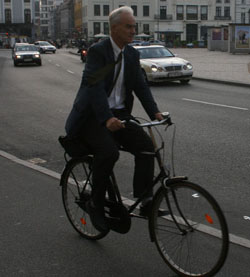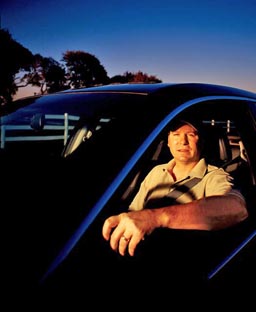Hypermiling: An Intense Way People Are Saving on GasolineWith gas prices fluctuating at or near record highs in the U.S. and beyond, it’s not surprising that many people are searching for the next best way to save money instead of throwing it down their vehicle’s gas tank. Some are using other methods of transportation like bicycles, trains, buses, or walking, or they are getting involved in carpools with other employees to save fuel and a few bucks. Some are investing in the new gas-electric hybrid cars. And some are going to a further extreme by hypermiling.
“Hypermiling is a method of increasing your car's gas mileage by making skillful changes in the way you drive, allowing you to save gas and thereby have an easier time withstanding the rising oil and gas prices,” states an August 2006 article in the Washington Post. Simply put, hypermiling means employing some rather intense methods to try to save on gas. Sure there are definite benefits to the hobby, but some onlookers believe it can all go a bit toofar. A Closer Look At Hypermiling Hypermilers are drivers of both hybrid cars and regular vehicles who go to extraordinary lengths to get as much as they can from every gallon of gasoline, typically far surpassing the EPA's (Environmental Protection Agency) estimated fuel economy ratings. Wayne R. Gerdes, a 44-year-old nuclear plant operator from Wadsworth is deemed as the current greatest fuel-efficiency driver in the world. Gerdes recorded an amazing 180.91 miles to the gallon during the hypermiling competition at Hybridfest 2006. Even in his regular old non-hybrid Honda that he drives to work, Gerdes averages an impressive 48.5 miles per gallon. By following a few simple guidelines, anyone can actually succeed at getting more miles per gallon using hypermiling techniques, boosting EPA standards by at least 20%. Here’s some key steps you can take -- including reasonable ones and those you might find rather excessive -- to become a hypermiler:
Pay attention and become aware of everything that goes in your head while you drive: The point of this step two is to get you to realize that when you are not paying attention to other drivers, it typically causes you to use your brakes more than usual. When you apply your brakes, you are turning gasoline into heat instead of using it for motion - meaning you are using more gas than you need to. If you are aware of your driving you will be able to coast when you see a red light ahead, see a car that is turning, or see a green light that you know will turn yellow very soon. Coasting uses less gas than if you were to apply your breaks quickly or make a complete stop (where you lose gas for going zero mpg).
Hypermilers alertly let their foot off the gas the minute they see a red light up ahead, or if they know the light would be turning to red shortly. It’s important to minimize the time spent fully stopped with the engine idling. The minute you see brakelights in front of you, take your foot off of the accelerator pedal, or hit the cancel button on your cruise control, and stop burning the gas that you know you'll be using up at zero mpg while you are stopped. Bottom line: Sitting at a red light or train crossing burns gas. You use the most gas when you accelerate. To get to a certain speed in 3 seconds, it takes more acceleration (fuel) than it would to reach that same speed in 4 seconds. It is no secret that gasoline wasted in traffic congestion causes a tremendous nationwide cumulative effect on the demand for fossil fuels. It’s also no secret that we'd all be moving along more smoothly in our cars without traffic congestion, resulting in less stops and starts and ultimately meaning less acceleration and less braking-induced deceleration – using less gas. We already know that accelerating uses the most gasoline, so hypermilers give an extra second of time between when the brake pedal is released and when the gas pedal is pressed. Letting an automatic transmission car start moving slowly under its own very small acceleration -- even just for a second -- will allow you to start using the gas pedal while the car is already in motion, thus saving on gas. (This doesn't work on hills only on flat or downgrade roadways.) Accelerating a bit more slowly makes a big difference in a car’s MPG. The "accel" button on the cruise control is a great way to accelerate slowly. With cruise control, you can accelerate with very small, defined increments, like 1/2 to 1 MPH per click on the "accel" button or hold down the accel button & it will continue accelerating, but slowly. Those are few of the keys to hypermiling. It seems sensible to adopt at least a few that seem reasonable to help burn less fossil fuels while saving money. And if you're in the market for a new hobby, by all means adopt them all and, being as creative as you are, come up with more of your own!
|

